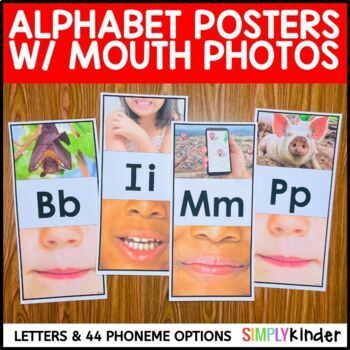Alphabet Posters Real Pictures and Mouth Photos, Science of Reading Activities


Alphabet Posters Real Pictures and Mouth Photos, Science of Reading Activities
[quads id=11]
Alphabet posters are a valuable tool for early childhood education, helping young learners to recognize and remember letters of the alphabet. While there are many different types of alphabet posters available, one increasingly popular option is to use real pictures and mouth photos to help children understand the sounds that each letter makes.
Using real pictures on alphabet posters can help children make meaningful connections between the letters of the alphabet and the world around them. Instead of simply seeing a letter on its own, children can see a picture of an object that starts with that letter, helping them to associate the letter with a tangible object. For example, seeing a picture of an apple next to the letter “A” can help children understand that that letter makes the “ah” sound that they hear in the word “apple.”
Additionally, including mouth photos on alphabet posters can help children understand how to properly form the sounds that each letter makes. By showing children the way that different letters are pronounced by different parts of the mouth, they can learn how to accurately make each sound. This can be especially helpful for children who may struggle with phonemic awareness or have difficulty distinguishing between similar sounds.
Incorporating real pictures and mouth photos into alphabet posters can also make learning the alphabet more engaging and interactive for children. Rather than simply memorizing the symbols of the alphabet, children can actively engage with the posters by associating each letter with a real-world object and by practicing making the sounds themselves.
In addition to using alphabet posters with real pictures and mouth photos, educators can also implement science of reading activities to further reinforce letter recognition and phonemic awareness. These activities may include phonics games, letter-sound matching exercises, and oral blending and segmenting practice. By incorporating these activities into their curriculum, educators can help children develop a strong foundation in reading and literacy skills.
Overall, the use of alphabet posters with real pictures and mouth photos, combined with science of reading activities, can be an effective way to help young learners develop their letter recognition and phonemic awareness skills. By making learning the alphabet more interactive and engaging, educators can set their students up for success in reading and language development.